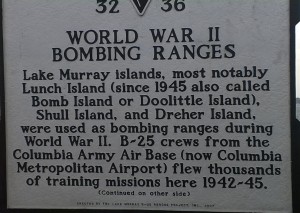Over the past couple of weeks, the Chinese government has been preparing for the twenty-fifth anniversary of the Tian’anmen Square Protest by cracking down on their list of potential protestors, fearing a repeat of that fateful day.
On June 4, 1989, the World watched in horror as the Chinese People’s Liberation Army (PLA), including their tanks, turned on their very own people. The image that I have in my head is probably the same image you have in yours; the student moving in front of the PLA tank in Tian’anmen Square.
How did the world’s most populous country get into that position?
In April of 1989, an icon of the Chinese Liberals, Hu Yao-bang, passed away. Hu was a former General Secretary of the Chinese Communist Party (CCP) who had refused to shut down a protest in January of 1987. To honor Hu’s death, students held peaceful demonstrations in Shanghai, Beijing, and several other cities.
The students who participated in this demonstration were some of the top academics in China. Although this started out as a memorial to Hu, it evolved into a protest to bring attention to the poor living conditions in China. Over the next month, this memorial service escalated to a pro-democracy protest with an estimated 100,000 students and workers participation, which culminated in Tian’anmen Square in Beijing. The participants in the demonstration were not the usual protestors, such as students and activists; instead, they included lawyers, journalists and older adult relatives of the students.
While the protest grew, the Chairman of the Chinese Communist Party (CCP) Deng Xiao-ping held meetings with his closest advisers to discuss how to deal with the first major threat to the Communist rule that this country had experienced since the Civil War of late 1940s. Besides this conflict in the Square, there was also conflict amongst his own advisers, Premier Li Peng and CCP General Secretary Zhao Zi-yang, as to how to handle the growing protest. The protest came just after the fall of the communist movement (or more correctly labeled, the dictatorships) in Eastern Europe. Chairman Deng Xiao-ping was going to do everything in his power to make sure the harsh communist rule would continue in China. The vision of a strong, self-reliant communist society had been largely shelved by the generation that had grown up after Mao. They thought Deng was different. They thought wrong!
On May 20, the Communist government declared martial law, which in itself sounds strange for a Communist dictatorship. Chairman Deng decided to follow Li Peng’s “get tough” plan and ordered the Chinese troops into Tian’anmen Square to end the pro-democracy protest.
After the protest was put down by the military, more than 10,000 protesters were injured, and a large number of people were detained or arrested. Strangely, Chinese citizens just “disappeared.” But that was not the worst of it; more than fifty Chinese were murdered. Sure makes the term Peoples Liberation Army sound like a misnomer.
The man considered to be the leader of the movement, Liu Xiaobo, was later arrested and put in prison, where he still sits. Liu won the Nobel Peace Prize for leading this peaceful protest advocating political reform.
Although the government had quelled similar protests since the mid-1980s, the extremely violent suppression of the Tian’anmen Square protest caused widespread international condemnation of the Chinese government.
Chinese business leaders and advisers in Beijing believed that most of the countries would restart their business with the People’s Republic of China (PRC) after a brief period of complaint over the Tian’anmen Square Incident. The Chinese government’s hopes were dashed for joining international organizations, trade or otherwise. Then US imposed sanctions and the World Bank suspended China’s loans.
Although there had been significant improvement in human rights in China in the in the twenty years leading up to the Tian’anmen Square Incident, abuses had continued.
Today, China has evolved militarily and economically into a world power. They have a growing middle class and a growing economy. However, the Communist Politburo still runs the country, though they have let up their boot a little from the necks of their peoples. Still, they have real issues within their government and economy.
I believe that, if another protest ever breaks out in Tian’anmen Square, this time the army will join the protestors in the streets and overthrow the Communist leaders.
What do you think will happen the next time the students start a protest in Tian’anmen Square?

